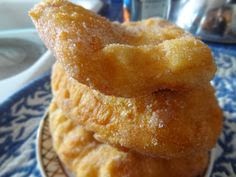Louisiana is known for Marti Gras, the Battle of New Orleans, jazz, and so much more.
Today we are talking about the oh-so-famous dish called Gumbo. Gumbo is a delicacy of Louisiana. It is rich and flavorful and is as varied as there are cooks who make it. There is seafood gumbo, chicken gumbo, okra gumbo, to name a few.
After a great amount of research, it became clear that understanding the history of gumbo is not so simple. Because so much of history is lost to us because so little was recorded, it is difficult to know exactly who did what and how this and that was done.
What we do know is that the long standing history of gumbo has made it famous as a premier dish in Louisiana. It even surpasses jambalaya or red beans and rice. And in every strata of Louisiana society you will find gumbo on the dinner table.
There are two categories of gumbo: Gumbo thickened with okra, which is where the name gumbo comes from. The other category is gumbo made with file, which is ground sassafras leave.
Simply put, gumbo is a thick, dark soup with vegetables, meat or seafood. It is always served with rice. While the variations are infinite, there are some hard and fast rules: Today we are talking about the oh-so-famous dish called Gumbo. Gumbo is a delicacy of Louisiana. It is rich and flavorful and is as varied as there are cooks who make it. There is seafood gumbo, chicken gumbo, okra gumbo, to name a few.
After a great amount of research, it became clear that understanding the history of gumbo is not so simple. Because so much of history is lost to us because so little was recorded, it is difficult to know exactly who did what and how this and that was done.
What we do know is that the long standing history of gumbo has made it famous as a premier dish in Louisiana. It even surpasses jambalaya or red beans and rice. And in every strata of Louisiana society you will find gumbo on the dinner table.
There are two categories of gumbo: Gumbo thickened with okra, which is where the name gumbo comes from. The other category is gumbo made with file, which is ground sassafras leave.
1. Start with a roux of oil and flour that is cooked until it is a deep, rich brown color.
2. Always, always use what is known as the "holy trinity" of vegetables. What is the holy trinity, you ask? It is chopped onion, chopped, celery, and chopped bell pepper.
 |
| The Holy Trinity |
Despite the unlimited possibilities, it seems that there are three categories of gumbo: Seafood Gumbo, which contains oysters, shrimp, crawfish, and/or crab; Poultry and Sausage Gumbo, which has chicken or turkey in combination with andouille or some smoked sausage, and the lesser known Gumbo Z'Herbes, which is actually a meatless soup created for Lent using greens.
As with so many dishes from so many cultures, gumbo has its own legends and myths. You may have already guess at one contraversy...is gumbo Cajun or Creole? And, as usual, there is no clear answer. What seems to be consistent in literature is that the word gumbo is decidedly African in nature; coming from the Bantu word for okra. Okra was known as ki ngombo. And okra is one of the staples in gumbo.
The 2 Prickly Pears never get in the middle of any contravery or decide for anyone how they should go about cooking. But we do offer a good recipe that can get you started on your Gumbo adventure. Our recipe is the classic chicken and sausage gumbo.
 |
| Chicken and Sausage Gumbo |
Here's what you will need:
1/2 cup oil
3/4 cup flour
1 medium onion chopped
1 medium bell pepper chopped
3 stalks celery chopped
4 cloves garlic minced
48 oz chicken broth
1 bay leaf
Cajun seasoning to taste
1/4 tsp red pepper flakes
salt and pepper to taste
1 lb andouille sausage cut in 1/4 inch pieces
2 lbs chicken thighs cut into bite size pieces
8 oz okra (either fresh or frozen, chopped)
Cooked rice
Here's what you need to do:
Brown the andouille sausage in a large Dutch oven. Remove sausage and brown the chicken in the same pan. Remove the chicken. Add the oil and flour to the pan to make a roux. Continue to stir the roux over a medium heat until it changes to a deep rich brown. This will take at least 18 minutes. Be sure not to burn the roux. Stir constantly. If it does burn, start over.
Once the roux is brown, add the onions, bell pepper and celery. Continue to heat allowing the vegetables to cook down for about 10 minutes. Add the garlic and cook another 5 minutes.
Add the chicken broth and bay leaf. The broth will thicken. If you prefer a thinner gumbo, add more broth. Add red pepper flakes, Cajun seasoning, salt and pepper. Cook over a medium-low heat for about 20 minutes. Taste to adjust seasoning as desired.
Remove the bay leaf. Add the chicken, sausage and okra. Cook for another 30 minutes. over low heat.
Serve over cooked rice.
There you have it. Even Yankees like the 2 Prickly Pears can make a southern dish like Gumbo and enjoy the rich spicy goodness.
Now, go out and make something good!















